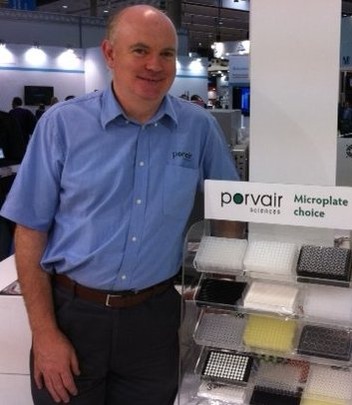
Stephen Knight from Porvair Sciences discusses ways of managing well-to-well crosstalk during luminescence measurements.
The use of luminescence assays and reagents in drug discovery has increased significantly over the past ten years due to a combination of ease of use, very high specificity of assays and good sensitivity at low levels of screened compounds.
Modern instruments accurately count very low levels of photons from luminescence substrates and this has led to an increasing focus on the optical cross talk inherent in the microplates and the signal-to-noise ratio that can be experimentally obtained.
Bioluminescence is a naturally occurring phenomenon exhibited by certain animal and plant species which can emit light through one of two common mechanisms, the Aequorin and Luciferin pathways.
Firefly beetles (Lampyridae), the marine copepod Metridia Longa and the Sea Pansy (Renilla Reniformis) all contain enzymes which catalyse the oxidation of Luciferin substrate in the presence of ATP resulting in the emission of light.
In luminescent jellyfish of the family Aequorea, the substrate Aequorin is excited in the presence of coelenterazine and Ca2 ions. In returning to the ground state, blue light is emitted.
By transfecting cells with a generic construct which includes a lucieferase gene, luciferase can be used as a reporter to assess transcription activity within cells or provide a very sensitive assay for cellular ATP levels used for the determination of cell apoptosis in high throughput screening applications.
In such assays, a continuous glow is emitted by the cloned luciferase enzyme system and the kinetics of this can be studied and linked to, for example, the concentration of available ATP.
Luminescence assays of this kind are marketed by several major life science companies under such names as AequoScreen, LucLite, ATPLite, OneGlo. Detection is normally in a luminometer or a multi-label reader.
Microplate design considerations
Microplates for use in assay development and High Throughput Screening are usually manufactured from polystyrene polymer.
To this is added an optical brightener, such as titanium dioxide, to increase the reflectivity of the plate surface for white plates, with a very smooth bright surface inside the wells.
This ensure that emitted light is reflected up towards the top of the micro well. This is where the sensitive optical detector of the measuring instrument is positioned during the reading cycle.
Difficulties can arise when using luciferase assays in screening where a high dynamic range is observed across the plate.
By incorporating bright white wells into a black matrix, optical crosstalk is all but eliminated
In such cases, adjacent wells may exhibit very strong or very weak signals and this can lead to optical cross-talk between the wells and consequently to erroneous results.
as an additional, albeit low, signal.
The error is worst when reading a low level signal adjacent to a far brighter well. Although plate designs using separated “chimney” wells can help to reduce this, they cannot eliminate it.
Two manufacturers offer plates formed as a black matrix with individual white cells moulded in at the time of production.
By incorporating bright white wells into a black matrix, optical crosstalk is all but eliminated in these plates, data showing that, when compared to other solid white assay plates, the black & white plate has up to 82% lower average well to well cross talk.
The combination of effective quenching by carbon black and increased reflectivity from titanium dioxide brightener yields an improved signal-to-noise ratio and better intra-plate dynamic range, giving screeners the opportunity to screen for weaker hits, at lower detection levels or with reduced concentrations of reagents.





